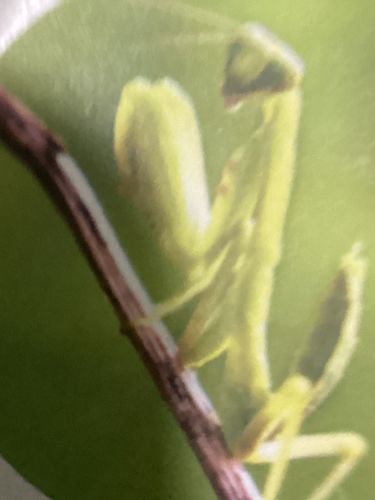Praying Mantis
Scientific Name: Mantis religiosa (or related species, specific ID difficult without clearer image)
Order & Family: Order: Mantodea, Family: Mantidae
Size: Typically ranges from 2 inches (5 cm) to 6 inches (15 cm) depending on the species.

Natural Habitat
Found in temperate and tropical regions, often in gardens, meadows, shrublands, and forests where there is sufficient vegetation for camouflage and hunting.
Diet & Feeding
Strictly carnivorous, feeding on a variety of other insects such as flies, moths, crickets, butterflies, and grasshoppers. Larger species may occasionally prey on small vertebrates like frogs, lizards, or small birds and rodents. They are ambush predators, using their powerful, spiny forelegs to quickly snatch prey.
Behavior Patterns
Known for their distinctive upright posture with forelegs folded as if in prayer. They are masters of camouflage, blending into their environment to ambush prey. They are mostly solitary insects. Females are known for sexual cannibalism, often eating the male after or during mating. Many species can fly, especially males, while some females are flightless or have reduced wings.
Risks & Benefits
Benefits: They are highly beneficial in gardens and agricultural settings as natural pest control, preying on many insect pests. They pose no significant risk to humans, as they are not venomous and do not bite unless threatened or provoked, and even then, a bite is harmless to humans. Risks: None noted for humans. They can, however, reduce populations of beneficial insects alongside pests.
Identified on: 9/7/2025